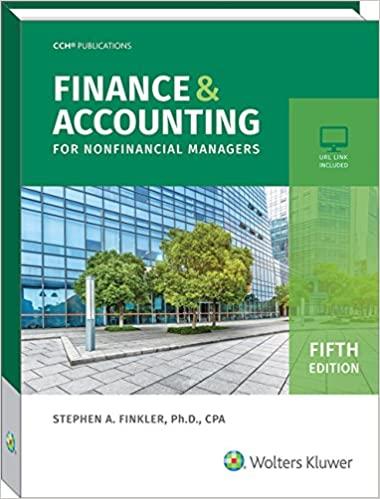Question
Required information [The following information applies to the questions displayed below.] Oxford Company has two divisions. Thames Division, which has an investment base of $81,200,000,
Required information
[The following information applies to the questions displayed below.]
Oxford Company has two divisions. Thames Division, which has an investment base of $81,200,000, produces and sells 1,250,000 units of a product at a market price of $145 per unit. Its variable costs total $39 per unit. The division also charges each unit $70 of fixed costs based on a capacity of 1,300,000 units.
Lakes Division wants to purchase 270,000 units from Thames. However, it is willing to pay only $139 per unit because it has an opportunity to accept a special order at a reduced price. The order is economically justifiable only if Lakes can acquire Thames output at a reduced price.
Required:
a. What is the ROI for Thames without the transfer to Lakes? (Round your answer to 2 decimal places.)
b. What is Thames ROI if it transfers 270,000 units to Lakes at $139 each? (Round your answer to 2 decimal places.)
c. What is the minimum transfer price for the 270,000-unit order that Thames would accept if it were willing to maintain the same ROI with the transfer as it would accept by selling its 1,250,000 units to the outside market? (Round your answer to 2 decimal places.)
Required information
[The following information applies to the questions displayed below.]
Oxford Company has two divisions. Thames Division, which has an investment base of $81,200,000, produces and sells 1,250,000 units of a product at a market price of $145 per unit. Its variable costs total $39 per unit. The division also charges each unit $70 of fixed costs based on a capacity of 1,300,000 units.
Lakes Division wants to purchase 270,000 units from Thames. However, it is willing to pay only $139 per unit because it has an opportunity to accept a special order at a reduced price. The order is economically justifiable only if Lakes can acquire Thames output at a reduced price.
Required:
a. What is the ROI for Thames without the transfer to Lakes? (Round your answer to 2 decimal places.)
b. What is Thames ROI if it transfers 270,000 units to Lakes at $139 each? (Round your answer to 2 decimal places.)
c. What is the minimum transfer price for the 270,000-unit order that Thames would accept if it were willing to maintain the same ROI with the transfer as it would accept by selling its 1,250,000 units to the outside market? (Round your answer to 2 decimal places.)
Division managers are evaluated using residual income using a 12 percent cost of capital.
Required:
d. What is the residual income for Thames without the transfer to Lakes?
e. What is Thamess residual income if it transfers 270,000 units to Lakes at $139 each?
f. What is the minimum transfer price for the 270,000-unit order that Thames would accept if it were willing to maintain the same residual income with the transfer as it would accept by selling its 1,250,000 units to the outside market? (Round your answer to 2 decimal places.)
| A. | ROI | % |
| B. | ROI | % |
| C. | Minimum Transfer Price | per unit |
| D. | Residual Income | |
| E. | Residual Income |
|
| F. | Minimum Transfer Price | per unit |
Step by Step Solution
There are 3 Steps involved in it
Step: 1

Get Instant Access to Expert-Tailored Solutions
See step-by-step solutions with expert insights and AI powered tools for academic success
Step: 2

Step: 3

Ace Your Homework with AI
Get the answers you need in no time with our AI-driven, step-by-step assistance
Get Started


